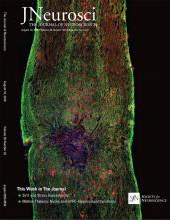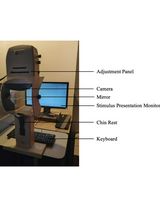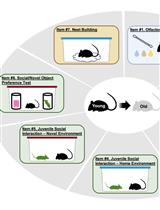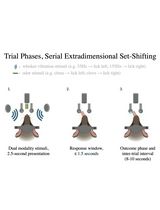- EN - English
- CN - 中文
A Tactile-visual Conditional Discrimination Task for Testing Spatial Working Memory in Rats
采用触觉-视觉条件辨别任务测试大鼠空间工作记忆
发布: 2017年05月20日第7卷第10期 DOI: 10.21769/BioProtoc.2282 浏览次数: 7136
评审: Soyun KimCarey Y. L. HuhAnonymous reviewer(s)
Abstract
This protocol describes a novel dual task comparison across two variants of a tactile-visual conditional discrimination (CD) T-maze task, one is dependent upon spatial working memory (SWM; CDWM) and the other one (CDSTANDARD) is not. The task variants are equivalent in their sensory and motor requirements and overt behavior of the rat. Therefore, differences between the two task variants in the dependent variables such as choice accuracy, neural firing patterns, and the effects of pharmacological or optogenetic inactivation in brain regions of interest can be attributed to SWM, ruling out confounding sensorimotor variables, such as tactile, visual and self-motion cues. The CDWM task protocol is published in Hallock et al., 2013b and Urban et al., 2014.
Keywords: Spatial working memory (空间工作记忆)Background
Our laboratory is interested in exploring the neural mechanisms of working memory. Therefore, we have developed a task that can be used to assess spatial working memory (SWM) ability in rats. Working memory is defined as holding a limited amount of information ‘online’ so that the information can be used or manipulated to guide goal-directed behavior (Baddley, 1992). Because rodents are naturally inclined to forage for food, they are excellent models to use to probe SWM. Our laboratory has developed and used a conditional discrimination (CD) T-maze task in which floor inserts that vary in texture and color serve as conditional cues for the rewarded goal arm (Griffin et al., 2012; Hallock and Griffin, 2013; Hallock et al., 2013a; Shaw et al., 2013; Hallock et al., 2016). For example, the rats learn to choose the left goal arm if they encounter a mesh insert and the right goal arm if they encounter a wooden insert. To discriminate between the inserts, rats can use visual information (black vs. light brown), tactile information (rough mesh vs. smooth wood), or a combination of both types of information. Because the insert covers the entire floor of the maze and is available when the rat makes a goal-arm choice, this task does not require SWM. More recently, we have developed a working-memory variant of the task (CDWM; Hallock et al., 2013b; Urban et al., 2014). In this variant of the task, the floor insert cues extend only halfway up the central arm of the maze and are not available when the rat makes a goal-arm choice, thus requiring the rats to hold the cue in mind for a brief period of time in order to make a correct choice and receive food reward. In an ongoing experiment, we have found that it is possible to train rats on both variants of the task, giving us a powerful way to identify behavioral correlates of SWM while ruling out confounding sensorimotor variables such as visual, tactile, and self-motion cues.
Materials and Reagents
- Male Long Evans Hooded (Harlan, Indianapolis) rats, weighing between 250 g and 500 g upon arrival (approximately 90 days of age)
- Chocolate Sprinkles are used for food reward. Our lab uses the Chef’s Quality brand
- 70% ethanol for cleaning the maze between daily training sessions
Equipment
- Wooden T-Maze that consists of a central stem (117 x 10 x 5 cm), two goal arms (56.5 x 10 x 5 cm) and two return arms (112 x 10 x 5 cm). The floor of the maze is covered with Roppe black vinyl (3 mm thick) (Figure 1)
Note: The T-maze was custom-built by members of our lab.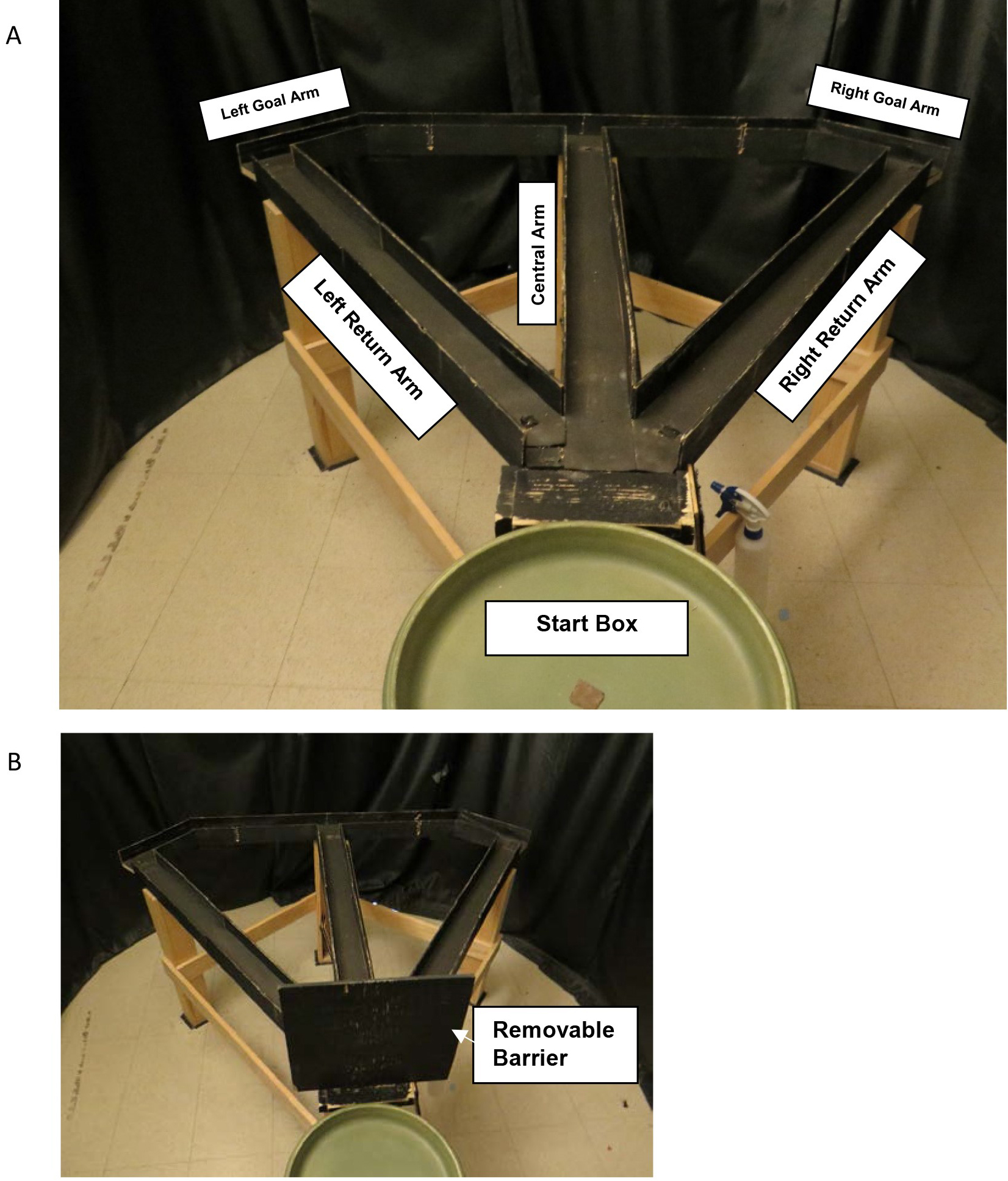
Figure 1. T-Maze used for both variants of the CD task shown with (A) and without (B) the removable barrier is used to confine the rat to the start box during the intertrial interval - A wooden stool (height: 69 cm) with a plastic saucer (diameter: 38 cm) attached to the seat serves, as the start box, is positioned at the base of the maze. The start box is separated from the maze by a removable 6-cm tall wooden barrier
- Three removable wooden floor inserts covered with black plastic mesh on one side and smooth wood on the other serve as conditional cues (Figure 2). The black mesh was glued to one side of the inserts with superglue, and consisted of 4 x 4 mm mesh squares. For the CDWM variant of the task, the central arm insert (74 x 8 cm) extends halfway from the start box to the T-intersection. For the CDSTANDARD variant of the task, the central arm insert (117 x 8 cm) covers the entire length of the central arm from the start box to the T-intersection. The three goal arm inserts, one large insert (61 x 8 cm) and two small inserts (26 x 8 cm) are placed at the ends of the goal arms next to the reward cups
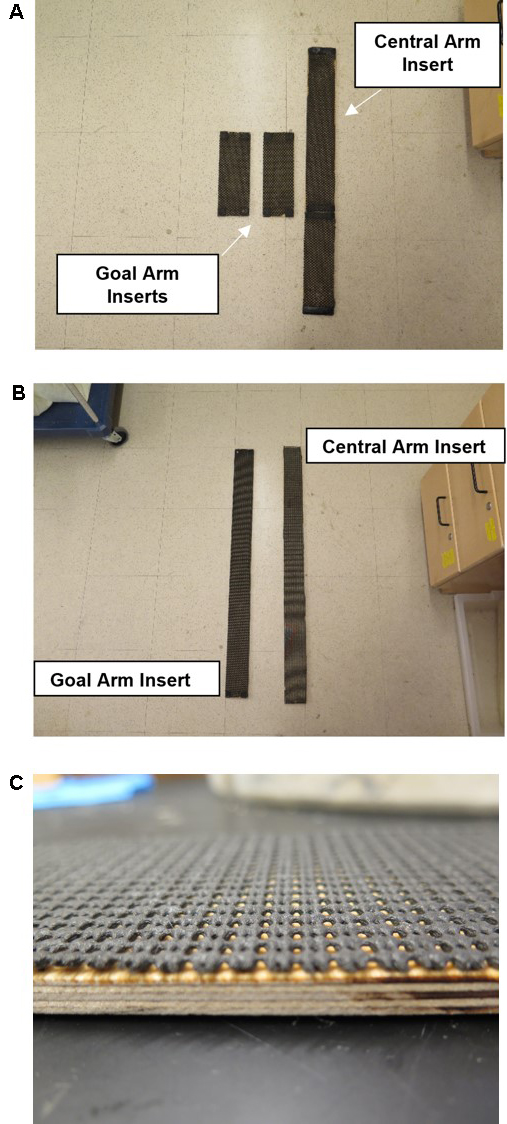
Figure 2. Removable wooden inserts shown mesh side up used for the CDWM (A) and CDSTANDARD (B) variants of the task, and close up view of the insert (C) - Black curtain, surrounding entire behavior room, 51 cm away from the maze
- Distal cues taped to black curtain, 142 cm from the floor, located behind the start pedestal, left and right reward cups (Figure 3). The cues are a pink triangle (38.1 x 29.2 cm), a red X (40.6 x 35.6 cm) and a blue cube (43.2 x 41.9 cm) made out of colored tape
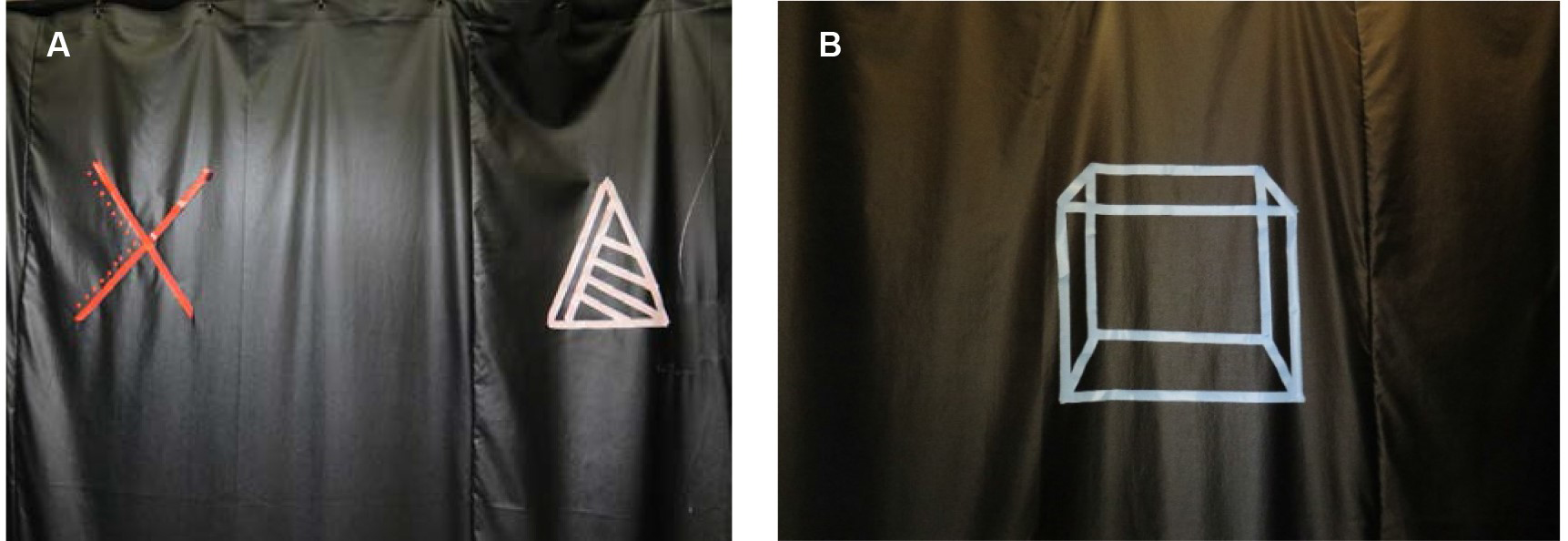
Figure 3. Distal cues taped to the curtains that surround the maze above the reward cups (A) and above the start box (B) - Plastic cups (3 cm diameter; 1 cm depth) located at the end of each goal arm where chocolate sprinkles (4-5 pieces) are delivered. The caps were 20 oz. water/soda bottle caps
- One 60 W incandescent lamp attached to the curtain track of the back middle wall, near the ceiling. The lamp is facing up towards the ceiling, therefore the room is dimly lit with no direct lighting on any portion of the maze
Procedure
文章信息
版权信息
© 2017 The Authors; exclusive licensee Bio-protocol LLC.
如何引用
Readers should cite both the Bio-protocol article and the original research article where this protocol was used:
- Edsall, A., Gemzik, Z. and Griffin, A. (2017). A Tactile-visual Conditional Discrimination Task for Testing Spatial Working Memory in Rats. Bio-protocol 7(10): e2282. DOI: 10.21769/BioProtoc.2282.
-
Hallock, H. L., Wang, A. and Griffin, A. L. (2016). Ventral midline thalamus is critical for hippocampal-prefrontal synchrony and spatial working memory. J Neurosci 36(32): 8372-89.
分类
神经科学 > 行为神经科学 > 认知
您对这篇实验方法有问题吗?
在此处发布您的问题,我们将邀请本文作者来回答。同时,我们会将您的问题发布到Bio-protocol Exchange,以便寻求社区成员的帮助。
Share
Bluesky
X
Copy link



